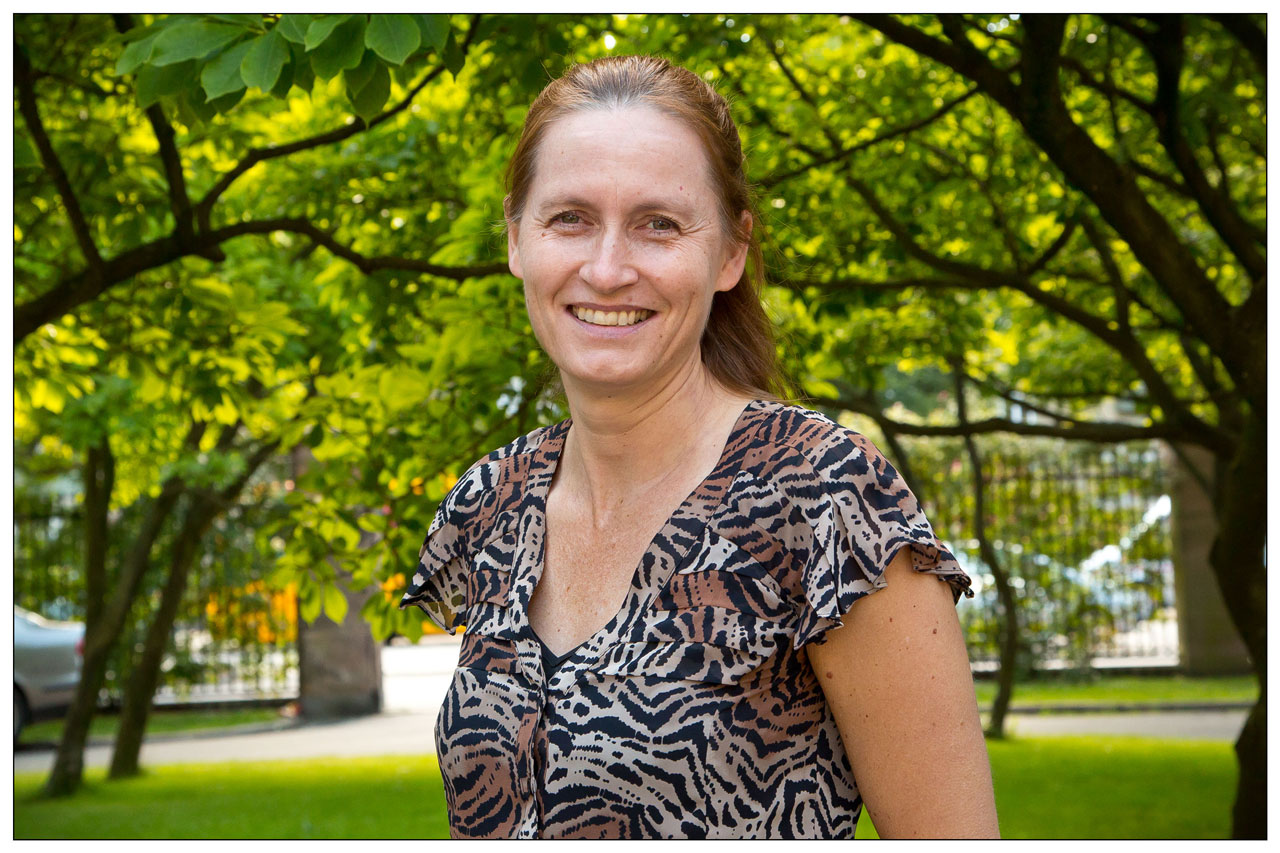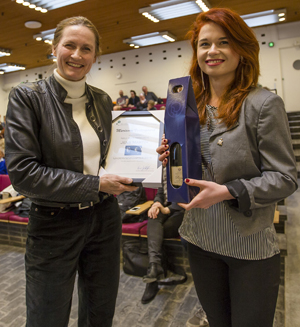Marianne Vestergaard receives the Niels Bohr Institute’s teaching award
“There are many good teachers, but there is one in particular that deserves to be celebrated for the brilliant difference she has made in the lives of her students, both professionally and personally – Marianne Vestergaard. Already after the first lecture we knew that this course was very special, it was a bit magical, it was Galaxies,” stated the students’ justification for nominating Marianne Vestergaard for the Niels Bohr Institute’s award for teacher of the year, the special Jens Martin Prize.

Marianne Vestergaard is an associate professor of astrophysics at the Dark Cosmology Centre at the Niels Bohr Institute. She studies the giant black holes at the centre of distant galaxies. The active black holes are called quasars and they expand at a breakneck speed by ‘eating’ the surrounding gas. Marianne Vestergaard studies the physical processes in the quasars – their structure and evolution and how the quasars affect their surroundings.
Marianne Vestergaard teaches courses for both undergraduate and graduate students and she places great emphasis on engaging the students and involving them in the teaching. She makes sure there is a good atmosphere in the classroom, but the students are also kept busy.

Marianne Vestergaard is receiving the prize as best teacher of the year by physics student Victoria Sosnovtseva. It is the students who nominate and decide who is awarded best teacher of the year.
“She erases the normal boundaries between student and lecturer, for in her classes we all feel like astrophysicists. The only requirement to participate is that you want to know more about the world we are a part of. Though it is also clear that knowledge does not come by itself and Marianne makes it easy to work 30 hours a week, for who would want to disappoint a lecturer that has so much faith in the abilities of her students? A lecturer who stays for two hours after the lectures to talk about anything outside the curriculum and at the same time takes the time to get to know us students,” explain the students.
Preliminary quiz
Before teaching begins, Marianne Vestergaard gives the students a quiz with 7-8 questions so they can see what is important to understand. She explains that it helps the students to answer the questions, because then they come and are already more prepared, but that it also has helped her as she can then see what they think is difficult and then she can focus more on explaining it.
“Never has one feared missing a lecture so much – for what if you missed out on Marianne’s metaphor about baby black holes that throw up? What if you did not see her clear calculations about galaxy dynamics and her analogy between cars and stellar mass? For on thing has been clear from day one: Marianne could explain everything better than it was explained in the book,” emphasized the students.
Looking forward to computer exercises
They also get a chance to try their hand at computer programming and here she can see that the students think that it is really fun to work with real data, which is like working on a real research project. They really enjoyed that and it gives them confidence.
The students explain that she got them to look forward to the course’s computer exercises, where the grey stellar spectra suddenly transformed into models of distant galaxies and how they got a glimpse of a distant world through their computer screen. In addition, they worked on galaxies that collided with each other, how much mass the Sun would need to have to become a black hole and the entire time they were encouraged to argue their claims and discuss their case.
Marianne Vestergaard receives the prize for her engaging teaching.
“I am very touched and incredibly happy to receive the Jens Martin Prize, because I am both nominated and elected by the students themselves. This means a lot to me. I am very happy that the students appreciate my teaching. This is very fine acknowledgement to get”, says Marianne Vestergaard and adds, “I myself had Jens Martin Knudsen as a teacher and he has been a huge role model for me, so I’m very honoured to receive this award”.
The Niels Bohr Institute’s teaching award, the Jens Martin Prize is named after the much-loved physicist and Mars researcher Jens Martin Knudsen, (1930-2005) who was known for his enthusiastic teaching. The Jens Martin Prize is the students’ prize, that is, they nominate candidates and determine the winner. The prize for teacher of the years comes 10,000 kr.

Marianne Vestergaard, Associate professor in the Dark Cosmology Centre at the Niels Bohr Institute, University of Copenhagen, +45 3532-5909, vester@dark-cosmology.dk
